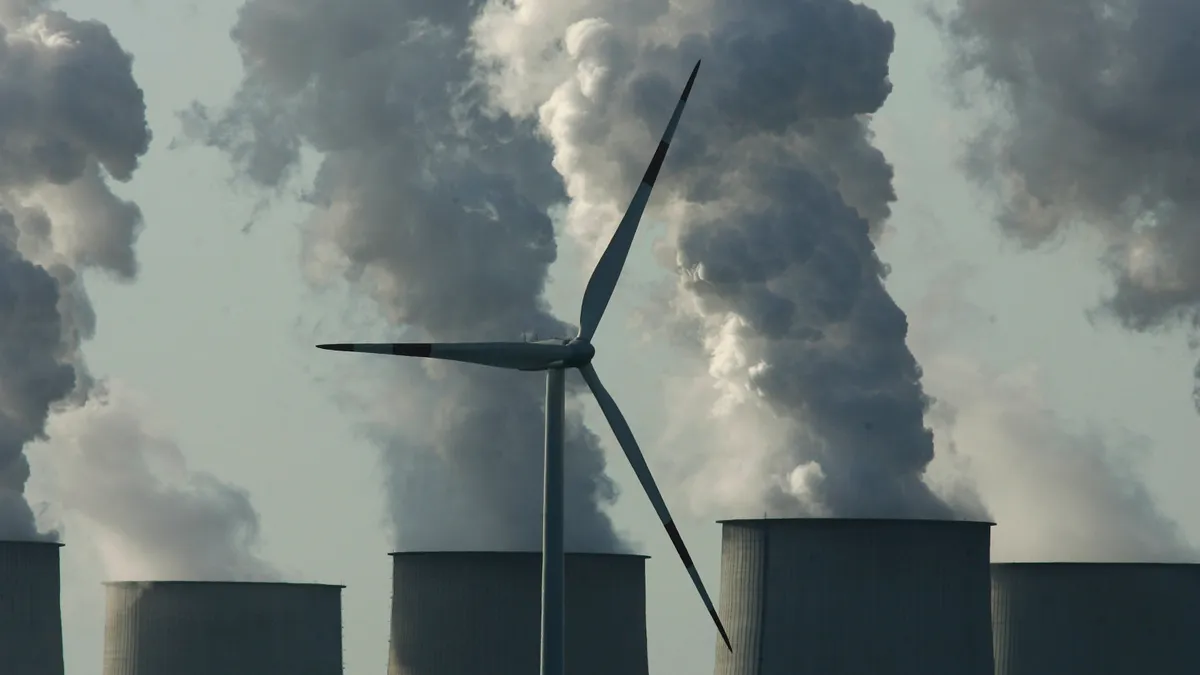Dive Brief:
- An Aug. 16 letter from ten Democratic members of Congress urged the Tennessee Valley Authority, the U.S.’ largest public utility, to lead on decarbonization by matching the Biden administration’s 2035 net-zero goal in its upcoming integrated resource plan.
- In a statement responding to the letter, TVA spokesperson Elizabeth Gibson said that TVA is already a national leader in carbon reduction and plans to reduce emissions 80% by 2035, then reach carbon neutrality by 2050.
- Southern Alliance For Clean Energy’s research director Maggie Shober said in an interview that the group would like to see TVA examine “a variety of scenarios” for carbon reduction in its IRP.
Dive Insight:
The ten members of Congress, along with Shober, criticized the mix of TVA’s generation portfolio and the utility’s continued reliance on fossil fuels. Both suggested that the TVA service area would have been less impacted by Winter Storm Elliott in December if the utility had more contributions from wind and solar.
While 38 of TVA’s 232 generating units were impacted by storm damage like instrumentation freezing over, the utility’s “relatively small amount of solar performed consistently during the storm,” wrote the lawmakers – including Rep. Steve Cohen, Tennessee’s lone Democratic representative.
The congressional letter said that TVA’s continued commitment to including fossil fuel generation in its portfolio “undermines” President Joe Biden’s executive order setting a federal 2035 net-zero goal, is expensive, and “disproportionately impacts communities of color and low wealth.”
“I really appreciated the members of Congress that sent this letter,” Shober said. “There are some things in there that we’ve been asking TVA for for a while, so my initial reaction was, ‘If they won't listen to clean energy folks like us, maybe they'll listen to members of Congress.’”
TVA has outlined plans to bring 10 GW of solar capacity online by 2035, but wind and solar combined currently make up around 4% of TVA’s generation portfolio. In a 10-K report TVA filed in September, the utility reported 39% of its generation was nuclear, 22% was natural gas or oil-fired, 13% was coal-fired, and 8% was hydroelectric, while 4% came from purchased renewables.
Gibson said that TVA’s plan to reach carbon neutrality by 2050 involves an “accelerated plan of increasing our solar and energy storage capacity and exploring new technologies, such as small modular reactors, that can provide carbon-free power to meet demand at all times.”
“Last year, we issued the nation’s largest clean energy request for proposal – a call for 5,000 megawatts of new energy sources,” she said.
TVA announced in May that it is “actively evaluating” 40 projects that could bring around 6 GW in solar and storage capacity online by 2026, and is looking to potentially double its solar power.
Shober said that since the passage of the Inflation Reduction Act, she was not aware of TVA pursuing the legislation’s provisions for direct payment for solar or wind projects, and that the utility has continued “fairly status quo” post-IRA.
While TVA’s lack of deployed renewables “would make it seem” like a 2035 net-zero goal “would be really difficult for them,” Shober said the utility’s strong investments in nuclear and hydroelectric power make TVA “better-suited than most utilities in the country” to actually meet that goal.
“They have a huge pumped storage facility, and they're looking at upgrading that and adding additional capacity there,” she said. “They have flexible resources, they have baseload resources in their nuclear. They're pretty well set up at this point – it's just how to replace the coal, and then the gas, that they really need to work on.”
Shober said SACE would like to see TVA use its upcoming IRP to further examine alternate options for the upcoming retirements of coal-fired plants like Cumberland, instead of moving forward with a gas-fired facility, which TVA CEO Jeff Lyash said in January was the most likely route.
“The best way to decide how to retire coal-fired power plants is through an IRP,” she said. “We think that all options should be on the table, and that the planned gas that has not already started construction should be an option in the IRP, not hard coded in all of the scenarios.”














